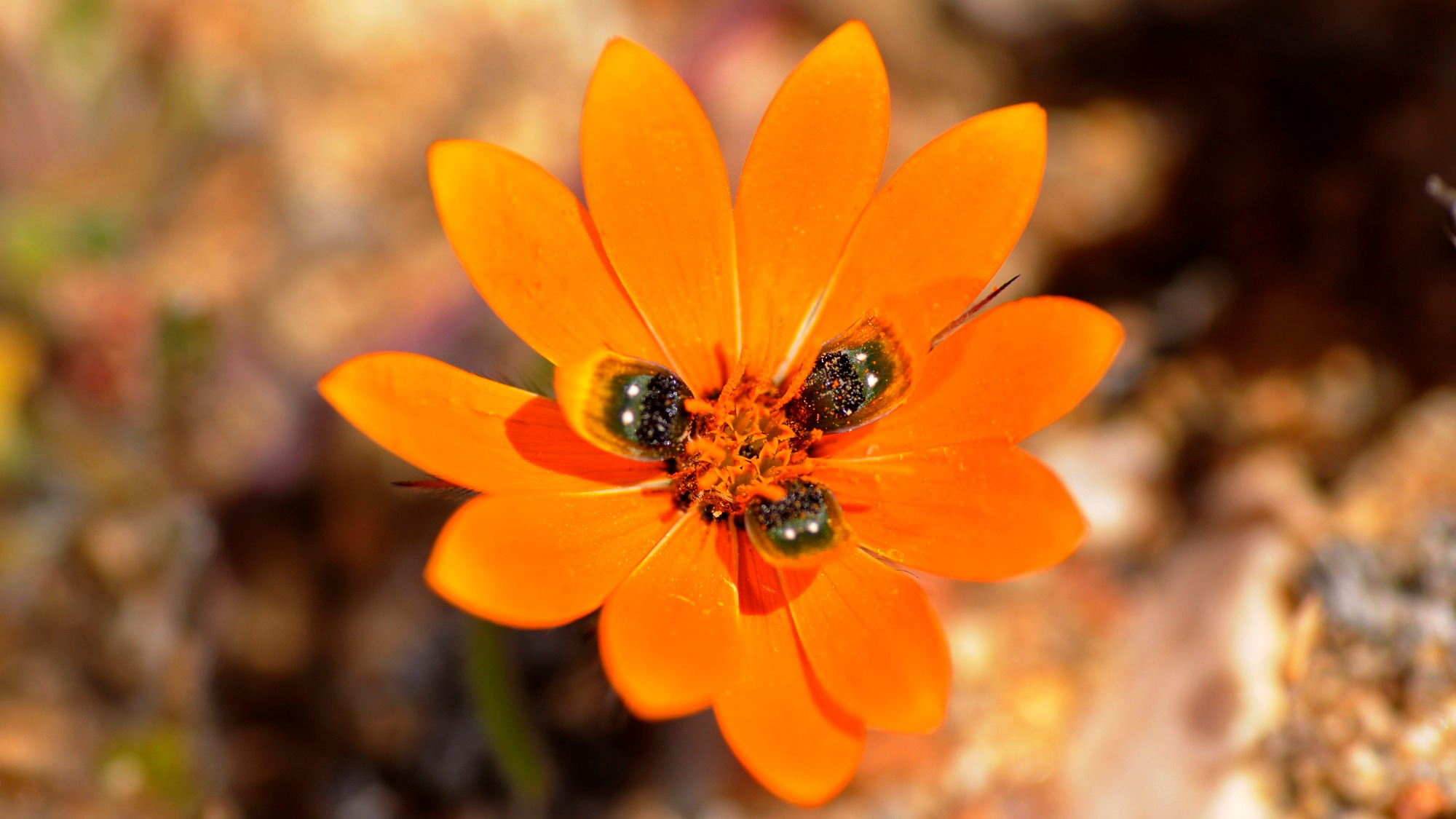

For decades, scientists have been studying a South African daisy’s (Gorteria diffusa) deceptive way to attract pollen. It uses its petals to trick male flies into believing the flower is actually a female fly. When a male insect approaches the flower, it jiggles around trying to mate, and typically buzzes off after a few unsuccessful attempts, leaving pollen behind.
In a study published March 23 in the journal Current Biology, scientists have identified three sets of genes that help build the fake fly appearance on the daisy’s petals. To determine what these genes do, the team compared which genes were ‘switched on’ in petals that had fake flies compared to petals without. They then compared the petals to a different type of daisy that produces a simple spot pattern on its petals, to figure out which genes were specifically involved in making the more deceptive fake fly spots.
According to the team, the surprising find is that all three sets of insect lookalike-creating genes already have other functions in the plant. One set moves iron around, one controls when flowers are made, and one makes hairs on the roots grow.
[Related: Ecologists have declared war on this popular decorative tree.]
“This daisy didn’t evolve a new ‘make a fly’ gene. Instead it did something even cleverer – it brought together existing genes, which already do other things in different parts of the plant, to make a complicated spot on the petals that deceives male flies,” said study co-author and University of Cambridge plant biologist Beverley Glover, in a statement.
To make this work, the ‘iron moving’ genes add iron to the flower petal’s typically reddish-purple pigments, which changes the color to a more fly-like hue of blue-green. The root hair genes create hairs that expand the petal and give it more texture, making the fake flies appear in different positions on the petals.
According to the team, this method of attracting more male flies to pollinate gives the plant an evolutionary advantage. The daisies grow in a harsh desert environment with a short rainy season, with makes for a compressed flower producing, pollination, and seeding schedule. There’s intense competition for the plants to attract pollinators, and these fake lady flies help the daisies stand out.

By evolutionary standards, this daisy is fairly young at 1.5 to two million years old. These fake fly spots were not on the planet’s oldest daisies, so they likely appeared on petals early on in their evolution.
“We’d expect that something as complex as a fake fly would take a long time to evolve, involving lots of genes and lots of mutations. But actually by bringing together three existing sets of genes it has happened much more quickly,” said study co-author and plant evolution specialist Roman Kellenberger, in a statement.
[Related: Bees can sense a flower’s electric field—unless fertilizer messes with the buzz.]
The authors add that this is the only example of a flower producing multiple fake flies on top of its petals. Other daisies make simpler spots like those around the petals, but they are not as convincing to real flies. Orchids can also use sexual deception to trick males into mating with its petals.
“It’s almost like evolving a whole new organ in a very short time-frame,” said Kellenberger.“Male flies don’t stay long on flowers with simple spots, but they’re so convinced by these fake flies that they spend extra time trying to mate, and rub off more pollen onto the flower – helping to pollinate it.”
